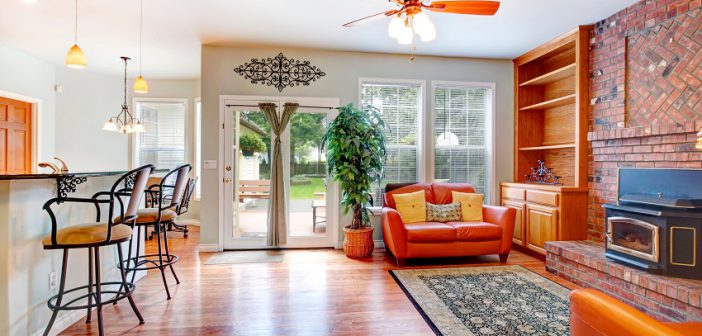If you’re considering new vinyl plank flooring for your home, you might be wondering about the difference between floating and glue-down installation. Here’s a quick overview of the pros and cons of each option to help you decide which is best for your needs.
Flooring and its importance in a home
Flooring is an important component of a home, as it sets the stage for your décor and influences the overall aesthetics. Glue down vinyl plank flooring is a great choice that combines durability with affordability. In addition, glue down vinyl planks come in various styles and textures, which allow for greater customization to match your needs and personality. Not only does glue down vinyl plank flooring provide a sleek modern feel, but also provides easy maintenance and cleanup, making this an ideal choice for any room of the home.
Discuss the two types of vinyl plank flooring – glue down and floating
When it comes to vinyl plank flooring, there are two major installation types to choose from: glue down and floating. Glue down vinyl plank flooring typically works best for areas with high foot traffic, such as hallways or living rooms. This type of installation involves either glue being applied directly to the subfloor or a pre-applied glue strip that adheres each plank together. Glue down vinyl plank flooring is not only great for high traffic areas, but also adds sound dampening benefits as well as great stability and longevity. Floating vinyl plank flooring is perfect for DIYers and is perfect for apartments or other rental situations where adhesive types are often not permitted. Coming pre-attached to a backing pad and “floating” above the subfloor, this installation method is quick, easy and minimally disruptive. One drawback of floating vinyl planks, however, is that high traffic areas may cause the planks to shift over time. But, when properly maintained and cared for, both glue down and floating vinyl plank floors will make stunning impacts on any space!
Go over the pros and cons of each type of flooring
Glue down vinyl plank flooring is becoming a common choice for many homeowners looking to redecorate with a modern yet durable material. On the plus side, glue down vinyl plank flooring offers a range of benefits, such as stylish visuals, easy care routine and more reliable installation process. On the flip side, glue down vinyl plank flooring may be slightly more expensive compared to other types of flooring, and it can also be difficult to install around lights or other installed fixtures.
Additionally, glue down vinyl planks are glued on top of concrete or wood which may cause an increase in sound levels when walking across the room. However, these benefits should be carefully considered because glue down vinyl plank flooring has several advantages too – it is waterproof and very easy to maintain, making it ideal for high-traffic areas like kitchens or bathrooms.
How to install each type of flooring
Installing glue down vinyl plank flooring is often a preferable option due to its durability and ease of installation. To begin, you’ll need to lay down an underlayment of foam padding or felt paper. After laying the underlayment, you’ll need to glue the planks directly onto the subfloor. Apply a generous amount of glue with a notched trowel to create an adhesive bond. Take care when cutting the boards to ensure they fit correctly, as this will contribute in achieving a finished look. Once all of the planks are glued down, the final step is to add trim along the edges of your new vinyl plank flooring.
How to look after your new floors
Caring for your new glue down vinyl plank flooring is essential to keeping it looking its best. To keep your floor looking great, begin by regularly sweeping and dry mopping the floors with a microfiber cloth. This can help prevent dust and other particles from settling between planks, which could scratch and damage the surface of your floor over time.
Secondly, try to use protective pads or furniture coasters on chair and table legs as much as possible.
Thirdly, be sure to clean up any spills or messes immediately as this will prevent them from seeping into the flooring and create long-term discoloration. Finally, avoid using any water-based cleaning solutions on your new glue down vinyl plank flooring; instead, select only products that are specifically designed for glue down dry back floors if necessary.
With these tips, you’ll be able to maintain your glue down vinyl plank flooring in pristine condition for years to come!
Takeaway
When it comes to selecting the right type of vinyl plank flooring for your home, glue down vinyl plank flooring is a great way to go. It is an economical option that provides excellent durability and stability throughout many years of use. Unlike click-lock or floating vinyl planks, glue down planks require a solid subfloor in order to be installed properly. They also come with a greater range of colors, styles, textures and finishes to choose from. And when it comes to glue down vinyl plank flooring maintenance and cleaning, vacuuming regularly with a soft brush attachment is typically all that’s needed for daily upkeep.




